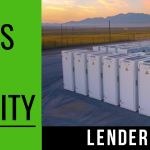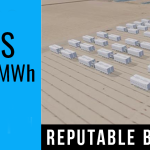
A revolutionary shift is underway in the electricity we use, and few people are even aware it’s happening. For years, much of the conversation has been about trying to get people to think green and make small changes in their lives to make a difference for the planet.
Meanwhile an idea has been taking root quietly, one with massive scale ramifications. That idea is large-scale energy storage, which has less to do with the average consumer and more to do with the decision-makers on where our energy comes from.
To understand the concept of energy storage, one must first understand the fundamental shortcomings of our electrical grid. The way the grid works sounds straightforward enough: When electricity is generated through wind, solar, or even traditional power-generation sources like coal-fired power plants, that electricity has to be pushed to the grid to be used immediately. If it goes unused, it’s essentially lost forever.
If you’ve ever driven by a wind farm and noticed that some or most of the wind turbines (Fig. 1) aren’t spinning, it’s not always because the wind isn’t blowing. Often, they aren’t spinning because the grid doesn’t need the electricity at that moment, so the wind turbines are shut down, otherwise known as curtailment.
However, energy-storage systems represent the future of utility-scale energy management, theoretically allowing every type of electricity-generation system to harvest the electricity at any time of the day and hold it in reserve for use whenever the grid actually needs it. This stands in sharp contrast to the status quo of “use it or lose it.”
But alas, nothing is that simple. While energy-storage systems have demonstrated their ability to be effective in practice, the cost far outweighs the benefit. That’s why changes in battery manufacturing, small and nuanced as they may seem, are so critical to the energy-storage sector, utilities, and most broadly, human life.
The Li-Ions
More recently, lithium-ion battery storage systems have been developed. These are capable of packing in enough energy, hopefully produced by renewables such as wind and solar at a low-enough price, to make utility-scale energy storage a practical addition for optimizing electricity-producing systems.





